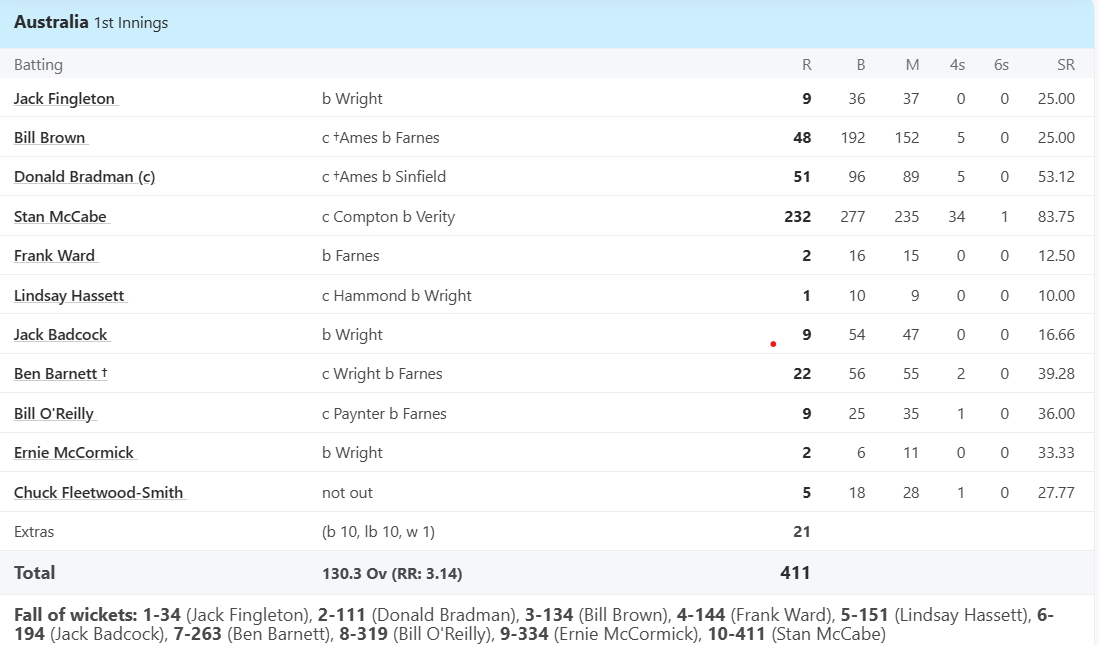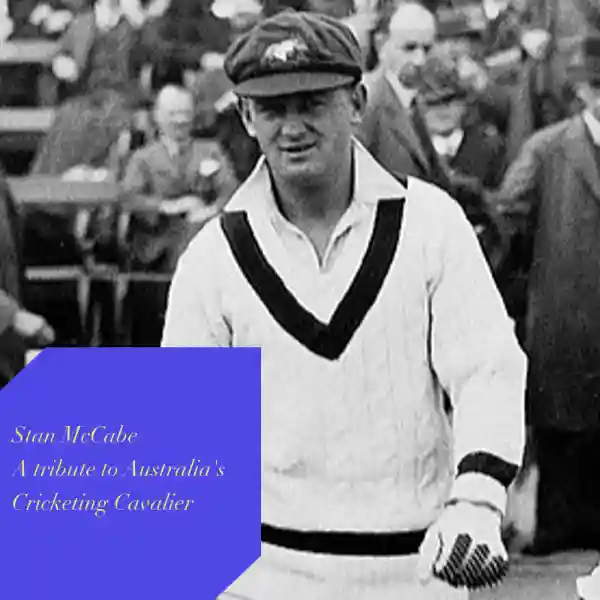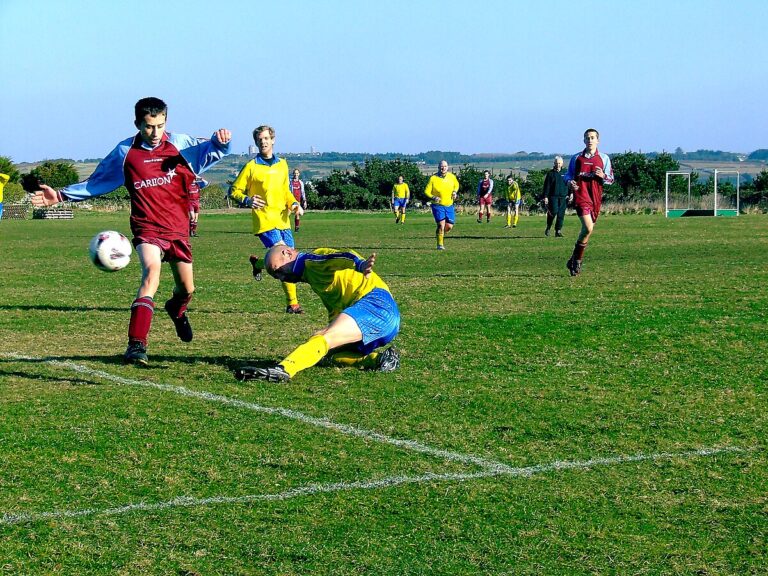Don Bradman’s compliment : Go watch Stan
Donald Bradman is the end of the scale when it comes to cricketing achievements. In a career spanning about two decades, the Don dominated the cricketing world.
Those were the days when Bradman was the only point of discussion in the world of cricket. He had been putting a generation of bowlers to the sword. Many cricketers of that era were overshadowed in comparison and were relegated to a passing reference at best in the annals of the times. A great deal has been written about his achievements.
For a change, this is not about Don Bradman.
This story is about a teammate of the Don, who stood out due to the sheer audacity of the cricket he played. Stan McCabe, who played 36 test matches, most of them alongside Bradman, was one of the few who stepped out of the shadows.
Bodyline Series, Cricket’s nightmare
McCabe played his first 15 tests, scoring a few fifties but no hundreds, and despite the promise his talent suggested, he remained largely unnoticed.
The year 1932 and the infamous Bodyline series were to change all that.
Douglas Jardine led England to Australia. Jardine knew that if they had any chance in the Ashes, they had to stop Bradman. He conferred with his fast bowlers and devised what was later to be known as the Bodyline strategy. Harold Larwood and Bill Voce agreed with Jardine’s idea that bowling short-pitched deliveries at the Australians’ bodies with a ring of fielders on the leg side would stop the Aussies in general and Bradman in particular.
The Ashes kicked off with the first test in Sydney. Although Bradman missed the test, the Australians nonetheless tried out the Bodyline tactic on the unsuspecting English. Larwood started with the regular wicket lines but gradually shifted to bowling on the body, with the leg side packed, and 7 to 8 Englishmen close together on the leg side, waiting for the inevitable edge from the fending Australians. Soon, the Aussies were four wickets down with 87 on the board.
When Jack Fingleton, who would end up later in life as a prolific cricket writer, was caught off Larwood, Stan McCabe walked in. The crowd, which had a past dislike for Jardine, could see Jardine’s intent, and was now angry, throwing slurs at the outfielders. They did not like what they were seeing. But then they had no idea of what they were about to witness. McCabe, by his admission and in his own twisted wisdom, decided to take the game back to the English.
For the rest of day one, McCabe hooked and pulled with aplomb. He would swivel on his feet and meet the nastily directed rising ball with a horizontal bat. The crackling of the ball meeting a willow arriving on time settled the crowds. He found gaps in the legside field with eight men at times. He kept at it fearlessly and almost with a suicidal bent of mind.
In the company of Vic Richardson, McCabe continued to take risks. Hooks and pulls were the order of the day and were being dished out with gay abandon. By the end of the play, he would score his first hundred, and still be around at 127. On day 2, he continued the maddening counter-attack, and when the Australian innings finally folded at 360, McCabe was still going, at 187 not out. A century that was to announce his brilliance, a 233-ball 187 with 25 boundaries had given the Aussies some heart.
England, however, went on to win the first test with Larwood taking a match haul of 10 and centuries from Sutcliff, Hammond, and Iftikar Ali Khan Pataudi, who had made his debut.
The English won the series 4-1, but McCabe emerged with a growing reputation—a reputation which he was to cement with another masterclass in 1938 at Trent Bridge.
McCabe in England – The Trentbridge tale…
McCabe is remembered, more than anything else, for three of his six career centuries. The best of these three was to come later in 1938 at Trent Bridge. In between the two at Sydney and Trentbridge, he had massacred the South Africans at Johannesburg.
The 1938 Ashes began at Trent Bridge. The Bodyline saga was a sordid chapter of history and had already been relegated to the history books with the disdain it deserved.
The British batting lineup, led by Wally Hammond, had a few young men in their twenties who would go on to become legends. Len Hutton and Bill Edrich were 22 years of age, and Denis Compton was just 20.
In the first Innings, with Eddie Paynter’s double hundred and a hundred each for Charlie Barnett, Hammond, and Compton, England declared at 658 for 8
Australia in reply were 111 for 2 when McCabe walked in to replace Bradman. Not very soon, they were reduced to 194 for 6. With only wicketkeeper Barnett, a decent bat at best, and the bowlers to follow, McCabe knew he had very few options.
He did what he knew best, threw caution to the winds, and waded into the English attack, which lacked the spite of the last one he had taken to the cleaners
What followed was an exhibition of cricket which prompted the forever cricket romantic Neville Cardus to observe
“Today McCabe honoured the First Test with a great and noble innings…The dear valiance of his play won our hearts. McCabe demolished the English attack with aristocratic politeness, good taste, and reserve.
The drives in the arc were poetry in motion , as crisp as the winter air. The hooks and pulls sent the bludgeoned ball bounding in glee to the ropes and late cuts were essayed as if in a time warp.
As the spectacle was unfolding, Bradman called his teammates in the dressing room to the balcony and said
“Come and look at this. You will never see the likes of this again.”
Along with Barnett and company, Stan McCabe added 217, with his partners contributing 38 of them. For the last wicket, he added 77 runs with Fleetwood Smith, the leg spinner pitching in with five runs. McCabe did the rest of the 72 in a glorious half-hour of dazzle—28 minutes to be exact.
He had shepherded the strike like none before while scoring at breakneck speed.
What the world witnessed was not the dodged, steely resistance that typifies most comeback stories; it was an in-your-face, take-this-and-then-this kind of counterattack. It is no surprise, then, that the innings McCabe played out is regarded as one of the best innings ever played in cricket.
For a change, the scorecard, which often tends to lie, displayed the story in right earnest.

When Australia finished at 411, McCabe was the last man to be dismissed, scoring 232 in 235 minutes.
The game had been elevated to art status by a short and stocky Aussie who went by the nickname Napper ( which he got due to his resemblance to Napoleon) .
Glorious, breathtaking, and forget-me-not art, which Bradman seems to have spotted.
As McCabe returned to the dressing room, Bradman greeted him with the words, “If I could play an innings like that I would be a proud man, Stan.”
There couldn’t have been a better compliment….
============




[…] had never seen such butchery of bowlers before. We had read of stories of Stan McCabe, Garfield Sobers, K Srikant, Kapil Dev, etc., but never had seen that kind of batting in […]